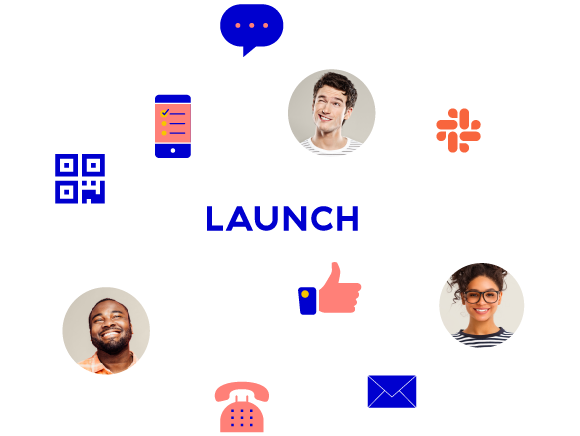Consumer insight is essential to creating an effective marketing plan and business strategy. Market segmentation can help you learn a great deal about your audience. Dividing people into categories helps you gain a better understanding of their needs and reveals how your products can solve their problems.
As a result, you can create custom campaigns that resonate with consumers and help generate revenue. After all, 72% of shoppers only engage with personalized messaging. Maximize your survey participants by implementing psychographic segmentation for invaluable and powerful insight.
What is Psychographic Segmentation?
The most obvious market segmentation strategy is demographic segmentation, dividing an audience by quantifiable variables like gender, age, and education. Psychographic segmentation is another effective way to categorize an audience into like-minded groups so that you can reach them with relevant messaging. This method separates people by psychological traits like values, opinions, social status, and lifestyle.
Psychographic segmentation helps you understand:
- What your customers value
- Their pain points
- Why they make the decisions they do
- How to offer solutions that they find valuable
Essentially, psychographic segmentation helps you understand why consumers make their purchases and how different customers will respond to various marketing campaigns.
3 Reasons Why You Should Use Psychographic Segmentation
Audience segmentation can be a powerful tool for companies who are conducting research. Here are three psychographics segmentation advantages for your business.
1. Create a Positive Customer Experience
When tracking consumer behavior, we can only speculate about why people act the way they do. Through psychographic segmentation, you discover the hidden reasons behind consumers’ purchase decisions. You can learn why they chose one product over another; what their priorities are when making a purchase; and how your products fit into their lifestyle. This gives you better insight into the needs of your audience and helps shape your path to creating a positive customer experience.
2. Boost ROI
Learning more about the lives of your audience can help you create customized messaging that resonates. When you know why they act the way they do, you can target your audience with relatable content. This means you’re not wasting resources on messaging that reaches the wrong people. It also means that, when you deliver meaningful information that brings value to your audience, you increase the likelihood of sales and conversions. All of this improves ROI and leads to growth and revenue.

3. Establish Sustainable Marketing
Trends, fads, and moods can change a person’s behavior on a regular basis. A celebrity endorsement that makes a product popular, or the release of the latest technological upgrade can cause you to constantly reconsider your marketing strategy. Personality traits, on the other hand, remain steady over time. Basing your marketing campaigns on the psychological reasons people make purchases is a strategy that is more likely to withstand the test of time.
Psychographic Segmentation Examples
The purpose of psychographic segmentation is to really get to know the people you’re trying to reach. To do so, you must assess psychographic segmentation variables to provide the insight you need for effective, custom campaign strategy. Here are the three main targeting variables and psychographic segmentation examples.
1. Personality
To really get an idea of who your consumer is, you must assess their personality. Morals, beliefs, and life outlook help shape the person you want to reach. Personality types fall into various subcategories, including (but not limited to) the following:
- Belongers: These mainstream consumers strive to fit in with the majority. They don’t want to be isolated or stand out from the crowd, and they don’t like change. These consumers tend to stay on trend and typically buy what others are buying.
- Achievers: More materialistic, these ambitious individuals purchase items to show off their status. Highly productive, their time is valuable and they don’t want it to be wasted on irrelevant information. These people are likely to buy luxury items simply because they can.
- Emulators: People who long to be Achievers but don’t have the ability or drive are Emulators. They maintain the appearance of ambition and success by purchasing items they can’t afford and knock-off products to make people think they’re more successful than they are.
- Saviors: These consumers put the needs of others before their own. Socially-conscious, they strive to make the world a better place without the expectation of receiving anything in return. They respond to emotional messages asking for help, donations, and contributions.
As you begin to learn more about your audience, you may discover that there are different personality traits that are unique to your customers. All of these are helpful in shaping your marketing efforts for maximum impact.
2. Lifestyle
The way people live their lives, the activities they’re involved with, and their interests and opinions reveal what they truly value. They’re also great indicators as to what people will spend their money on. Three lifestyle variables include:
- Activities: People’s hobbies and activities determine what types of purchases they’ll make. Someone who enjoys fishing will need poles and bait. Someone who is more advanced will purchase lures, proper fishing attire, and possibly tracking devices or even boating equipment. Needs and investment level will vary depending on how involved different individuals are in their activities.
- Interests: It’s important to know what excites people to drive them to act. Someone who enjoys spending time with their friends would benefit from a marketing campaign advertising board games. A consumer who cares about fitness could find value in a promotion for healthy food services or exercise facilities in their area. Engagement is a key identifier in determining how to approach your target audience.
- Opinions: Attitudes are formed by preconceived notions, past experiences, and even moral views. Understanding where your audience falls in their opinions about politics, sustainability, religion, and climate can provide useful insight into the items they buy and how they may respond to your messaging. For instance, a consumer who is ecologically-conscious would be more receptive to a low-emissions vehicle ad than a promotion for a diesel truck.
3. Social Class
Social hierarchy impacts purchasing power. Promoting goods or services that are outside your audience’s budget will not only be a deterrent. It could also lead them to believe you’re out of touch with their needs. Identifying various segments of social class can help you know what kinds of products to market and what price points are reasonable. For example, a lower-class family isn’t likely to respond positively to a campaign marketing cruise vacations.
How to Do Psychographic Segmentation
Gathering psychographic data means digging deep and reaching beyond the most obvious information. By asking the right questions, you can unveil true insight into the motivators that are unique to each consumer. You can use any of these tactics to do psychographic segmentation:
- Phone interviews: For fast, in-depth information, call people and ask them questions over the phone. This puts a voice to your business, which can help build trust. It also gives you a chance to visit with participants in a way that reveals more information and builds a deeper relationship with your customers.
- Digital surveys: The goal is to obtain quality responses that can shape your marketing strategies for optimal results. Surveys should take no longer than 10 minutes to complete, and open-ended questions provide the greatest opportunity for in-depth answers. You might offer incentives to entice people to participate.
- Analytics: A Facebook business page and Google Analytics can both provide insight into psychographic data. You can learn what topics engage your audience, what kind of messaging appeals to them, and what kind of response rate other campaigns have received.
All of these are effective ways to gather the information you need to develop impactful marketing messaging that’s sure to resonate.
CheckMarket Helps You Navigate Psychographic Segmentation
At CheckMarket, we understand how important market segmentation is to delivering impactful results. Our online survey software is easy to use and offers great depth in identifying why people make the purchase decisions they do. Let us help you gather the insights you need to grow and reach your goals.


Laisser un commentaire